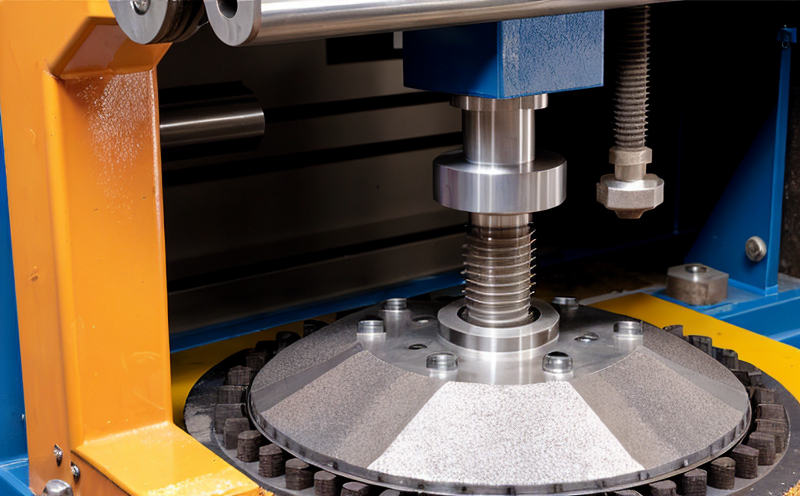ISO 13373-6 Condition Monitoring Procedures
The ISO 13373 series of standards provides a framework for condition monitoring procedures, which are critical in ensuring the reliability and safety of HVAC (Heating, Ventilation, and Air Conditioning) equipment. The specific part ISO 13373-6 focuses on vibration-based condition monitoring techniques used to assess mechanical integrity and operational performance.
Condition monitoring is a proactive maintenance strategy that helps identify potential failures before they lead to costly breakdowns or safety hazards. By employing ISO 13373-6, quality managers and compliance officers can ensure their HVAC equipment maintains optimal performance over its lifecycle. This method is especially beneficial for large facilities where downtime could result in significant financial losses.
The standard outlines procedures for measuring the vibration characteristics of rotating machinery within HVAC systems. Vibration analysis can reveal issues such as misalignment, bearing wear, and unbalance, which are critical factors affecting mechanical reliability. Using this approach helps prevent equipment failures, thereby extending its lifespan and reducing maintenance costs.
In a typical testing scenario, technicians would first prepare the specimen by ensuring the HVAC system is running under normal operating conditions. The instrumentation used for vibration analysis typically includes accelerometers placed strategically to capture comprehensive data about the machine's behavior. Data acquisition systems then process this information into graphs and charts that can be analyzed for signs of abnormal operation.
The interpretation of these results involves comparing current readings against baseline measurements taken during initial commissioning or at regular intervals throughout maintenance cycles. Any deviations from expected norms may indicate areas requiring attention, prompting further investigation through more detailed diagnostic tests if necessary.
One key advantage of using ISO 13373-6 is its flexibility in accommodating various types of HVAC equipment across different industries. Whether it's an industrial plant with complex systems or a commercial building with sophisticated controls, this standard provides a consistent methodology for evaluating mechanical health. This consistency ensures that all stakeholders involved—whether they are R&D engineers developing new technologies or procurement teams sourcing components—are working towards common goals.
Another important aspect of ISO 13373-6 is its emphasis on continuous improvement. As technology advances, so too must our methods for monitoring and maintaining equipment integrity. By adhering to this standard, facilities can stay ahead of emerging trends in condition-based maintenance practices, ensuring they remain competitive in both performance and sustainability.
In conclusion, implementing ISO 13373-6 into your HVAC testing protocols offers numerous benefits ranging from enhanced operational efficiency to improved safety standards. It provides a robust foundation upon which further innovations can be built, ultimately leading to more reliable and sustainable HVAC systems.
| Standard | Description |
|---|---|
| ISO 13373-6:20XX | Vibration-based condition monitoring procedures for rotating machinery in HVAC systems. |
| ASTM E1508 | Guide for Vibration Analysis of Machinery and Equipment. |
| IEC 62307 | Condition monitoring systems for rotating machinery in industrial applications. |
Why It Matters
The implementation of ISO 13373-6 is not just about compliance; it's also about maximizing the efficiency and longevity of HVAC equipment. By incorporating condition monitoring into routine maintenance practices, organizations can significantly reduce unscheduled downtime, lower operational costs, and improve overall performance.
For quality managers overseeing multiple sites or large-scale projects, having a standardized approach like ISO 13373-6 simplifies the process of ensuring consistent standards across all locations. This uniformity ensures that every piece of equipment is evaluated fairly and accurately, regardless of location or manufacturer.
Compliance officers benefit from this standard as well because it provides clear guidelines for meeting regulatory requirements related to mechanical integrity. With a standardized protocol in place, there's less ambiguity regarding what constitutes compliance, reducing potential risks associated with non-compliance penalties.
R&D engineers can leverage ISO 13373-6 during the design phase of new HVAC systems or modifications to existing ones. Understanding how various components will behave under different conditions allows for better integration into overall system performance metrics. Additionally, this standard supports innovation by encouraging ongoing research into more advanced diagnostic techniques.
Procurement teams gain significant advantages too since they can specify equipment that meets these stringent criteria during procurement processes. This ensures that the parts ordered are compatible with existing systems and future upgrades, streamlining integration efforts post-delivery.
Frequently Asked Questions
Environmental and Sustainability Contributions
The application of ISO 13373-6 extends beyond mere functionality; it plays a crucial role in promoting environmental sustainability. By reducing maintenance costs through early detection of issues, organizations can avoid unnecessary replacements or repairs that contribute to waste generation.
Moreover, the reduced downtime associated with effective condition monitoring translates into decreased greenhouse gas emissions from idle equipment and faster recovery times following outages. This efficiency not only saves money but also helps protect our planet by minimizing resource consumption.
In summary, adopting ISO 13373-6 in HVAC testing contributes positively to both operational excellence and environmental stewardship. It represents a win-win situation where businesses achieve better outcomes while contributing to global sustainability goals.





